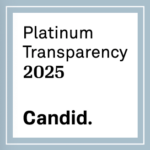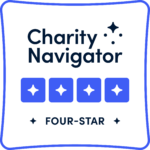|
Secretary Sebelius (HHS), Dr. Francis Collins (NIH) and Dr. Margaret Hamburg (FDA) join leadership from Academia, Government and Industry to discuss “The New Role of Academia in Drug Discovery and Development”
 Sec. Kathleen Sebelius Delivers Keynote Address
 Audience listens to Sec. Sebelius at the Kaufman Foundation Conference Center US Secretary of Health and Human Services Kathleen Sebelius delivered the keynote speech and stated, “we have no better partners than our academic centers” in research. She reiterated the Obama administration’s commitment to science and emphasized that increasing research budgets alone is not enough; new partnerships are essential in order to achieve success with research dollars. Examples of recently established collaborations within the federal government to cultivate partnerships in drug discovery are the new FDA/NIH Leadership Council announced earlier this year, and the Cures Acceleration Network established as a part of the health-care reform legislation. To View the Secretary’s Speech Click Here
During a special panel discussion moderated by former House Majority Leader Richard Gephardt, FDA Commissioner Dr. Margaret Hamburg, and NIH Director Dr. Francis Collins, discussed programs they are implementing to capitalize on the strengths of each agency in advancing medical research. Dr. Collins stated that government collaboration is just one vehicle, but it will require collaboration with academia and industry to develop new innovations. Dr. Hamburg said that there is a need to step back and evaluate the FDA’s role in advancing biomedical research. She discussed the need for an emphasis on regulatory science, which has the ability to bring a cutting-edge scientific approach to safety and efficacy evaluations of new products. Dr. Hamburg told the audience that President Obama included money in the 2011 budget specifically targeted to advance regulatory science. To View Dr. Collins and Dr. Hamburg’s Discussion Click Here The conference consisted of four panel discussions moderated by Reuters National Health Correspondent Lisa Richwine. The first panel focused on a new way of thinking about how industry and academia can better collaborate to successfully and efficiently translate scientific discoveries into new therapies. The panelists emphasized that moving an idea from basic research into clinical study is becoming increasingly difficult. New ideas often languish due to scarce resources for early stage investment or a lack of expertise. The panelists agreed that a new model requires multi-disciplinary interaction at each step of the process to encourage the translation from basic science to clinical application. |
| ____________________________________________________ |
| Leaders on from NIH, AHRQ, FDA, CMS, NCI, House, Senate, and Academia Discuss the Future of Comparative Effectiveness Research at Friends Forum Supported by Oracle Health Sciences
On June 18, Friends of Cancer Research hosted a forum on the future of comparative effectiveness research (CER). The meeting featured leaders from all sectors discussing priorities for expanding the conduct of CER in the U.S. During the discussion it was noted that the PCORI Board needs to promote transparency, credibility and inclusiveness in the processes of identifying the best choices for patients.Dr. Clancy conveyed her optimism about the opportunity to focus research on a longitudinal basis, as well as the legislation’s recognition of the need for additional methods of development. Both agreed that achieving meaningful use out of today’s wealth of data is a major priority. This included the importance of establishing a robust infrastructure to support ongoing CER. Specifically, Dr. Collins suggested tapping into patient data gathered in HMOs. The discussion concluded with a conversation regarding the compatibility of CER and personalized medicine. Both agency directors suggested that the two are complimentary and voiced that CER and personalized medicine ought to be considered “hand in glove.” The panel opened with enthusiasm for CER and the new Institute, as well as the inter-agency collaborations that are already taking take place. Dr. Hodes noted those recently established partnerships between the FDA and NIH. The panelists discussed the need for public literacy and transparency in terms of CER, and the importance of filtering CER information through decision makers to improve patient outcomes.
The panel began by discussing the importance of current data aggregation efforts. Dr. Croyle spoke of the need for balance among several important elements of the aggregation process: infrastructure development, standards development, and grow-your-own development. One of the biggest challenges facing health data aggregation is the amount of unclear evidence that often faces patients. To Continue Reading Click Here. __________________________________________________________
|
| ____________________________________________________ |
 Focus on the National Cancer Institute (NCI) Focus on the National Cancer Institute (NCI)Harold Varmus Sworn in as National Cancer Institute’s 14th Director Nobel Prize winner Harold E. Varmus, M.D., yesterday took the oath of office to become the National Cancer Institute’s (NCI) 14th director. NCI is one of the 27 Institutes and Centers that comprise the National Institutes of Health (NIH). “It’s very exciting to have you back,” said Health and Human Services Secretary Kathleen Sebelius during the swearing-in ceremony. “Today is the opening of a new chapter for NCI.” In his opening remarks to a town hall meeting that reintroduced Varmus to the NIH community, NIH Director Francis Collins, M.D., Ph.D., called him “the best person on the planet to take the reins of the National Cancer Institute at this propitious moment.” Varmus was co-recipient of the Nobel Prize in Physiology or Medicine in 1989 for studies of the genetic basis of cancer. He most recently served as president of Memorial Sloan-Kettering Cancer Center in New York City. |
 |










